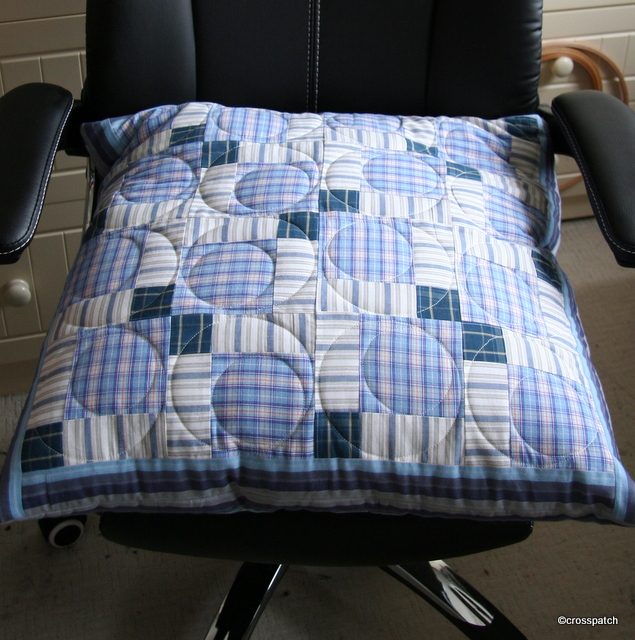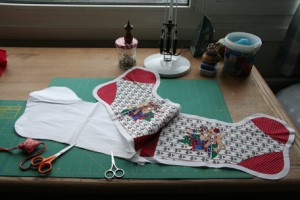thank goodness I didn’t make them bigger, stockings have to be well filled at Christmas, a thin and meagre stocking is so dispiriting isn’t it?
And I need to finish a project I began 5 years ago, we were driving to Hull and back twice each weekend to facilitate contact with my Dearest’s 7 yr old son and 11 yr old daughter. To while away the long car journeys and thinking I might have two children staying with us at Christmas, I began to make them a stocking each to hang at the fireplace.
I have already made a number of Christmas stockings but they are for adults and generally fairly small for the kind of little stocking gifts that amuse adults, these stockings would need to be bigger, much bigger.
 I can’t remember where I got the original pattern from, but it has been modified a number of times over the years. There are plenty of stocking patterns on the net if you’d like to try this yourself.
I can’t remember where I got the original pattern from, but it has been modified a number of times over the years. There are plenty of stocking patterns on the net if you’d like to try this yourself.
The fabric was my quilt group’s Christmas challenge fabric for 2007, sadly I’m five years too late to enter the challenge, but they will be finished this Christmas, come what may! There were two colours of co-ordinating fabric, and a collection of small panels. I chose two matching panels one for each side of each stocking, a different colour way for each stocking, so that I could tell them apart.

The panels were applied using bondaweb, and the edge stitched with Gold thread using a fancy machine stitch. I used a stitch which reminded me of icicles, it would have worked far better in silver but the embellishment on the fabric is gold, so my embellishments had to be gold too.

I will have to quilt the panels in gold tread before I stitch up the sides of the stockings, and I haven’t quite worked out how I will quilt them, but probably the holly leaves and berries, which I have used before. It’s easy to create your own quilting patterns or stencils, I found a simple line drawing of a holly leaf and berries on an advertising handbill, scaled it up and cut it out of cereal box. I might have used plastic film if I needed to use it on an entire quilt, but cereal packet is fine for a few uses.
Each stocking will have metre of ribbon folded in half and stitched into the back seam so it can be tied with a bow to whatever I want to attach it to, the banister rails are a favourite place.
I plan, if I have time to make a swing tag,a gift tag to hang from each stocking like the little dog on a Radley handbag, with just an initial for each of them V and T, the children are now 12 and 16, their gifts tend to be smaller and more expensive than back then, so the stockings are probably large enough, thank goodness I didn’t make them bigger, stockings have to be well filled at Christmas, a thin and meagre stocking is so dispiriting isn’t it?








